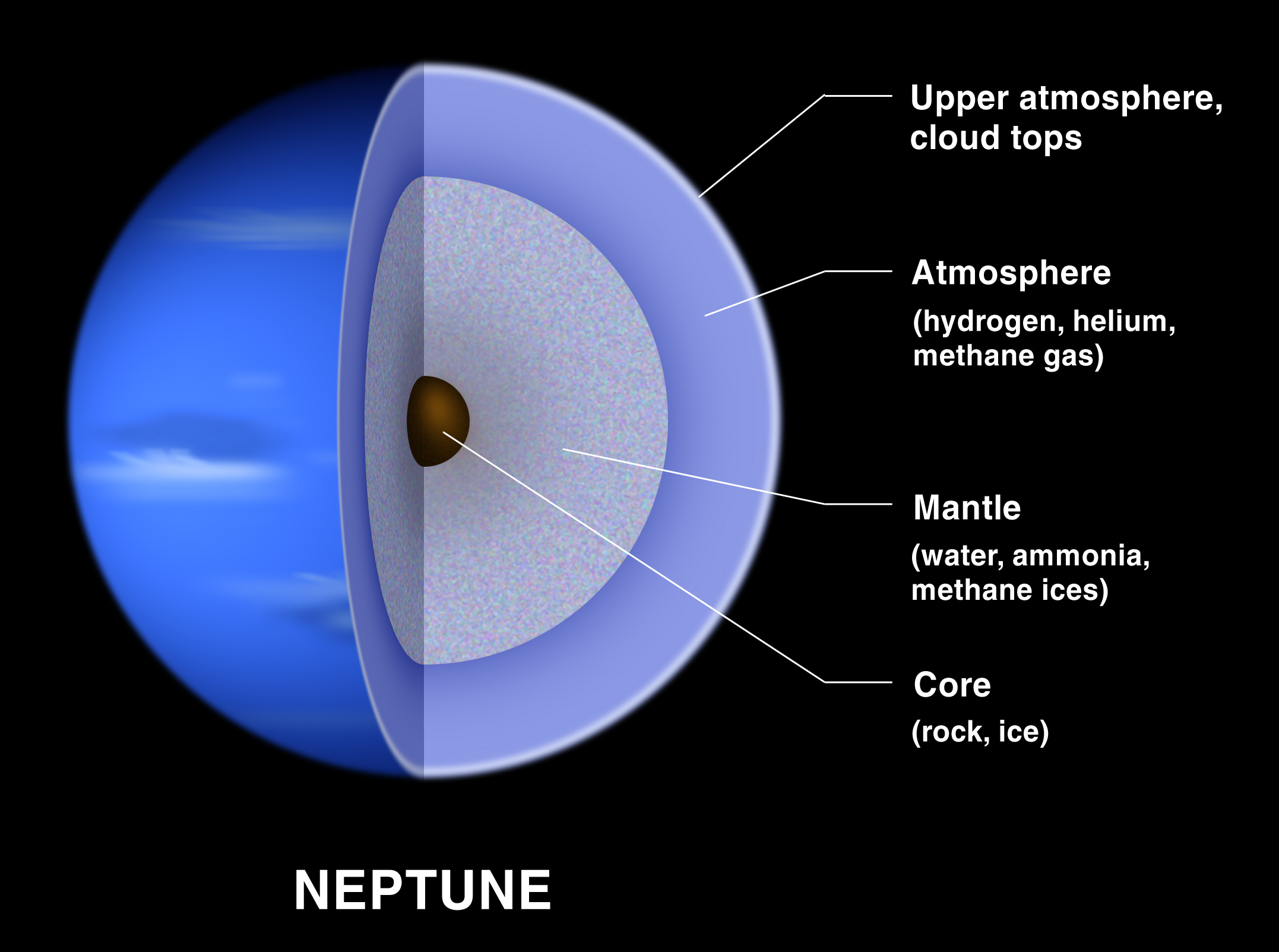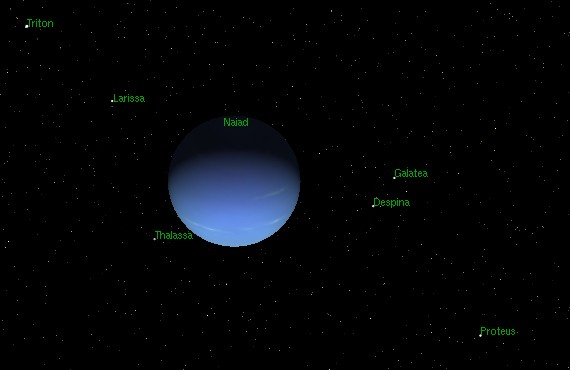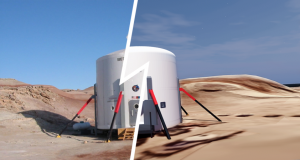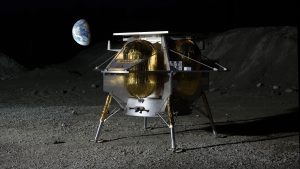Planet Neptune


Neptune is the eighth planet of our solar system, named for the Roman god of the sea for its blue color. After Uranus was discovered, observers used Newtonian physics to predict another planet orbiting farther out. French astronomer Urbaine Le Verrier and English astronomer John Couche Adams used the mathematical models of the time to predict this theoretical eighth planet’s position and two astronomers named Johann Galle and Heinrich d’Arrest used these calculations to find Neptune within a degree of its predicted position. This led to a dispute between England and France over who deserved the credit for the discovery, which was eventually settled by giving both Le Verrier and Adams the credit.
A Presentation on The Planet Neptune
Neptune by the Numbers
- Period of Rotation: 16.11 hours
- Orbital Period: 164.79 Earth Years
- Diameter At Equator: 49,500 kilometers
- Mass: 1.030 X 10^26 kilograms
- Average Distance from Sun: 4.504 X 10^9 kilometers (30.06 AU)
- Number of Moons: 13 known moons
- Gravity: 1.19 G
- Escape Velocity: 25 km/s
- Average Temperature: 73 K (-200 C, -382 F)
More About Neptune

Neptune’s atmosphere is made up with 80% hydrogen and 19% helium with traces of methane, which gives it the familiar blue-green color that influenced its naming for the god of the sea. Interesting features include the Great Dark Spot, a giant storm not very different from the Great Red Spot on Jupiter. The Great Dark Spot will sometimes disappear and then reappear. Neptune also features high-speed winds that blow in the direction opposite to its rotation.
Under the atmosphere, pressures on Neptune reach the point where they create a slushy ice and rock layer. Under that is a solid heavy-element core. Neptune radiates more heat than is absorbed by the sun, suggesting radioactivity in the minerals forming its core.
When Voyager 2 flew past Neptune in 1989, it confirmed astronomers’ suspicion of rings. They are dustier than Uranus’s rings and astronomers believe that Neptune’s moons influence and also contribute to the rings by shedding debris when they collide with other objects.
Neptune’s Moons

Triton was the first of Neptune’s moons to be discovered. William Lassell, one of England’s top 19th-century astronomy hobbyists, first observed it on 10 October 1847. Triton is the largest of Neptune’s moons and has a nearly circular retrograde orbit. Features include a crust that shows signs of having been geologically active in the relatively recent past and active geysers that may be powered by internal heat.
Nereid was the second moon to be discovered for the simple reason that it was the only other one of Neptune’s moons that was visible to telescopes of the time. It has a highly eccentric orbit and takes almost an Earth year to complete one orbit. It was named for the sea-nymphs of Greek mythology.
Proteus was missed because it is too dark and too close to Neptune for most Earth-based telescopes. It is the second largest of Neptune’s moons but doesn’t have enough mass to form a near-perfect sphere like our moon. It was discovered by the Voyager 2 probe and was named for a shape-changing sea god of Greek mythology.
Naiad is a small potato-shaped satellite that, like many of Neptune’s smaller moons, may be a remnant of a larger satellite that was torn apart by the upheaval when Neptune captured Triton. It was the last moon to be discovered by Voyager 2.
Voyager 2 Flyby
Voyager 2 is the only interplanetary probe that has encountered Neptune and flew past in 1989.








